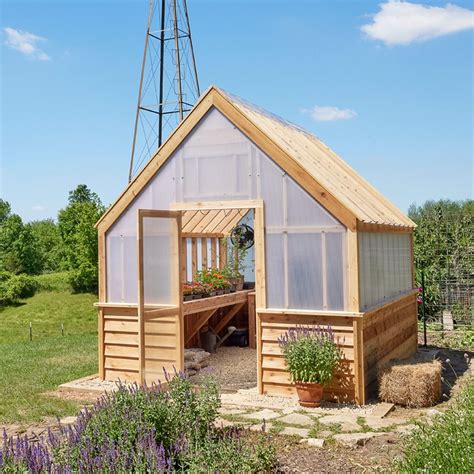Building an Efficient Balcony Greenhouse for Year-Round Gardening
Creating a balcony greenhouse is an innovative way to bring year-round gardening to small spaces. Whether you’re an urban dweller with limited access to traditional gardens or someone looking to extend the growing season, building a balcony greenhouse can make a significant difference. This article covers key steps, design principles, and considerations, from materials to plant selection, to ensure an efficient and sustainable structure.
Key Concepts for Balcony Greenhouses
When designing a greenhouse for a balcony, it’s essential to balance space constraints, lighting needs, and structural integrity. Maximizing available space and ensuring proper sunlight exposure is crucial for healthy plant growth. Key concepts include selecting the right containers for your plants, creating a sturdy frame, and utilizing reflective materials to enhance light efficiency.
Historical Context: Urban Gardening Evolution
The concept of urban gardening, and specifically balcony greenhouses, traces its roots to densely populated cities where limited space necessitated creative solutions. Over the last few decades, the shift toward sustainability and urban agriculture has brought about a surge in interest for small-scale greenhouses. What started as a niche idea for apartment dwellers is now an integral part of eco-friendly living.
Current State Analysis
Balcony greenhouses are gaining popularity, particularly in cities where outdoor space is scarce. Advances in lightweight materials, such as polycarbonate panels and aluminum frames, allow for structures that are easy to install and maintain. Urbanites increasingly use vertical gardening systems to optimize space, and smart gardening tools, such as automated watering systems, enhance plant care. The primary challenge remains ensuring adequate sunlight, especially on shaded balconies.
Practical Applications of a Balcony Greenhouse
A balcony greenhouse allows urban gardeners to grow fresh produce, herbs, and ornamental plants year-round. Whether you’re cultivating tomatoes, lettuce, or small flowering plants, it’s important to choose varieties that thrive in containers and require minimal space. Incorporating tiered shelving and hanging planters can help maximize space. Balcony greenhouses also serve as a controlled environment to start seedlings before transplanting them outdoors.
Case Studies: Successful Balcony Greenhouses
| Location | Size | Key Features | Challenges Overcome |
|---|---|---|---|
| New York City, USA | 3 ft x 6 ft | Tiered planters, solar-powered ventilation | Limited sunlight, small footprint |
| Berlin, Germany | 5 ft x 8 ft | Polycarbonate panels, automated irrigation | Cold winters, limited vertical space |
| Tokyo, Japan | 4 ft x 5 ft | Vertical planters, reflective materials | Air pollution, small area for plants |
Stakeholder Analysis
In constructing a balcony greenhouse, various stakeholders play important roles. Urban gardeners are the primary beneficiaries, gaining access to fresh produce and plants. Building managers must ensure that the added structure is safe and complies with building codes. Environmental advocates support this trend as it promotes sustainability. However, neighbors might be concerned about visual impact or structural overhangs.
Implementation Guidelines for a Balcony Greenhouse
- Measure your balcony space to ensure the greenhouse will fit comfortably without obstructing pathways or doors.
- Choose a lightweight frame material like aluminum or PVC that can withstand wind without overloading the balcony structure.
- Opt for transparent or semi-transparent coverings, such as polycarbonate panels, to maximize sunlight while offering insulation.
- Install proper ventilation to regulate humidity and temperature. Solar-powered fans are an eco-friendly option.
- Use container gardening techniques with high-efficiency watering systems to prevent water runoff and conserve resources.
- Secure the greenhouse against high winds by using weighted bases or fastening it to balcony railings.
Ethical Considerations
From an ethical standpoint, balcony greenhouses encourage sustainable living by reducing the carbon footprint associated with store-bought produce. They also foster food security in urban environments. However, there are potential challenges. For instance, improper installation could pose safety risks, and without careful planning, the structure could negatively impact neighbors by blocking views or sunlight. Ethical guidelines include ensuring proper structural safety, minimizing visual pollution, and adhering to local building codes.
Limitations and Future Research
While balcony greenhouses present an excellent solution for small-space gardening, they are not without limitations. In northern climates, lack of sunlight during winter months can reduce plant growth. Furthermore, not all balconies are structurally capable of supporting a full greenhouse. Future research could explore more efficient lightweight materials and technologies to increase energy efficiency in these compact spaces. Advances in artificial lighting technologies and solar panels could extend the usability of balcony greenhouses even further.
Expert Commentary
Experts in urban gardening emphasize the role of balcony greenhouses in promoting self-sufficiency and sustainable agriculture. According to horticulturists, proper plant selection and thoughtful design are key to success. While the challenges of sunlight, temperature control, and space constraints persist, the benefits—ranging from mental health improvements to environmental sustainability—make balcony greenhouses a worthwhile investment.


